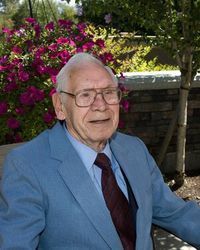So what happens to the gold teeth?
This may be a weird question. Can we get the gold teeth back?
When a family is having a loved one cremated, many ask this question. We hear it on almost a daily basis. So we don’t find it weird at all to wonder what happens to the gold teeth.
However, it does not have a simple answer. Let’s get into it.
The material in a gold tooth is not solid gold but an amalgam, a mixture or blend of a few different metals. Pure 24k gold is pretty soft and wouldn’t make a good material to replace a tooth by itself.
You really don’t know what percentage of gold there is in a crown unless you ask the dentist who made it. There seem to be as many options of alloys in crowns as there are dentists.
I posed a few questions to one of them, Dr. Daniel Bickel of Redmond Art of Dentistry:
How much gold is typically used in a gold crown?
“Around $50 [worth], on average. It depends on how aggressive the crown preparation was by the dentist. There can be as much as $80 per crown or as little as $25. There is no way to tell via X-rays.”
Has that amount changed over the last few decades? (Do older crowns have more/less gold?)
“Older crowns do not have more or less gold than today’s crowns. There are 3 types of gold used in the dental field. There is High Noble gold which contains at least 60% of its composition is of the noble metals gold, platinum, palladium, and silver. Of that 60%, at least 40% of that percentage needs to be gold in order to earn this distinction from the American Dental Association. Then there is Noble gold which has a composition of 20% Gold, 20% Palladium, 40% Silver, 18% Indium, 2% Zinc, Less than 1% Iridium. Then there is non-precious metal which is mainly cobalt and chromium. There is no way to know which make-up of metal the crowns are without getting them analyzed.”
According to abcnews.com, “A gold crown typically uses about one-tenth of an ounce of 16-karat gold, which would fetch around $40 to $50 at today's prices.”
So basically, there is no real way to know how much gold is actually in Grandma’s mouth.
And, only a dentist can perform a tooth extraction. Funeral directors and cremationists are neither licensed nor allowed to perform dentistry.
Dr. Bickel asked his dentist colleagues what they have charged to perform an extraction. The general response was anywhere from $650-$800. He added that it is also difficult to find a dentist who will be comfortable with providing this work.
So if we look at it from a financial standpoint, it not worth paying to have gold teeth extracted prior to cremation. From a sentimental standpoint, it is possible but there are more than a few hurdles to get it done.
So can I get the gold back after the cremation is complete?
Cremations range in temperature from 1400 to 1800 degrees F, for 4-6 hours.
While 24 karat gold does have a melting point that’s slightly higher, (1,943 degrees F), as the purity level of gold drops, so does its melting point. According to Sciencing.com “18-karat gold has a melting point of 1,700 degrees Fahrenheit and 14-karat gold has a melting point of 1,615 degrees Fahrenheit.”
At cremation temperatures, any gold in the teeth will be definitely melted.
Also, during the cremation, the remains may have to be moved and repositioned to facilitate a complete process. That means that any metals that get liquefied at those temperatures also get mixed in with the bone fragments.
Those bone fragments are then processed, resulting in the final cremated remains or “ashes” that are then returned to the family.
So, if you wanted the gold back, you will technically have it, but it will be unrecognizable and indistinguishable from the rest of the cremated remains.
What about in Alkaline Hydrolysis?
Alkaline Hydrolysis (also known as Water Cremation, Aquamation, Biocremation, flameless cremation, or Resomation) is the reduction of the body using water rather than the flame of regular cremation. The result of the processes are similar, families get back powdered bone fragments or “ashes”.
But with Alkaline Hydrolysis, anything that is not organic material comes out clean from the bath. Pacemakers don’t have to be removed prior to the process. Any implanted metals, joint replacements, surgical hardware, dental work, can be recovered to return to the family or be recycled.
This is a great article from the BBC if you want more information about Alkaline Hydrolysis
People’s Memorial is working on having this method legalized in Washington State. Keep an eye on our newsletter for updates!






